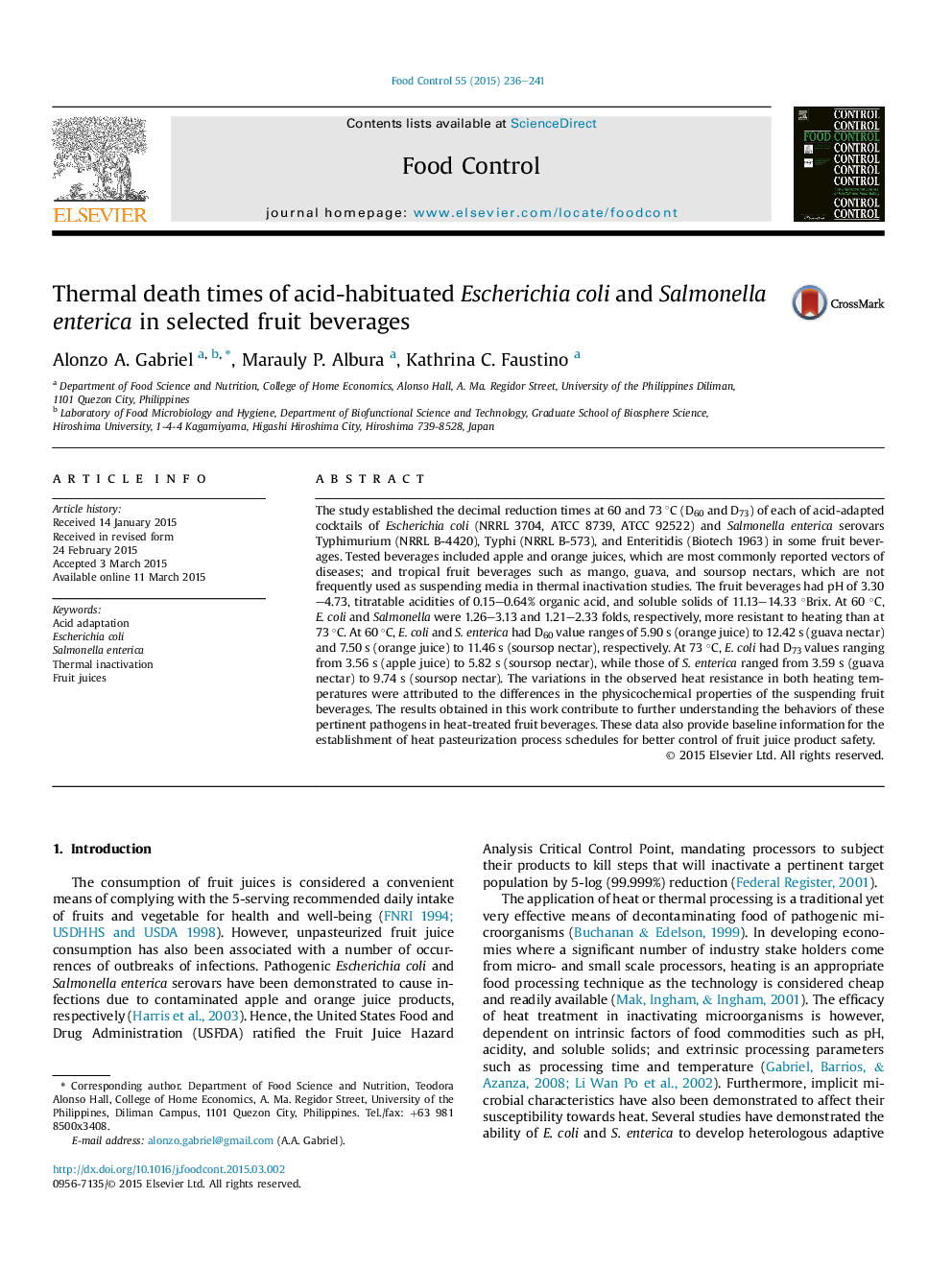| کد مقاله | کد نشریه | سال انتشار | مقاله انگلیسی | نسخه تمام متن |
|---|---|---|---|---|
| 4559307 | 1628407 | 2015 | 6 صفحه PDF | دانلود رایگان |
• Both organisms exhibited log-linear inactivation in all test media.
• Higher D values were determined at lower heating temperature.
• Physicochemical properties of beverages affected inactivation rates.
The study established the decimal reduction times at 60 and 73 °C (D60 and D73) of each of acid-adapted cocktails of Escherichia coli (NRRL 3704, ATCC 8739, ATCC 92522) and Salmonella enterica serovars Typhimurium (NRRL B-4420), Typhi (NRRL B-573), and Enteritidis (Biotech 1963) in some fruit beverages. Tested beverages included apple and orange juices, which are most commonly reported vectors of diseases; and tropical fruit beverages such as mango, guava, and soursop nectars, which are not frequently used as suspending media in thermal inactivation studies. The fruit beverages had pH of 3.30–4.73, titratable acidities of 0.15–0.64% organic acid, and soluble solids of 11.13–14.33 °Brix. At 60 °C, E. coli and Salmonella were 1.26–3.13 and 1.21–2.33 folds, respectively, more resistant to heating than at 73 °C. At 60 °C, E. coli and S. enterica had D60 value ranges of 5.90 s (orange juice) to 12.42 s (guava nectar) and 7.50 s (orange juice) to 11.46 s (soursop nectar), respectively. At 73 °C, E. coli had D73 values ranging from 3.56 s (apple juice) to 5.82 s (soursop nectar), while those of S. enterica ranged from 3.59 s (guava nectar) to 9.74 s (soursop nectar). The variations in the observed heat resistance in both heating temperatures were attributed to the differences in the physicochemical properties of the suspending fruit beverages. The results obtained in this work contribute to further understanding the behaviors of these pertinent pathogens in heat-treated fruit beverages. These data also provide baseline information for the establishment of heat pasteurization process schedules for better control of fruit juice product safety.
Journal: Food Control - Volume 55, September 2015, Pages 236–241
